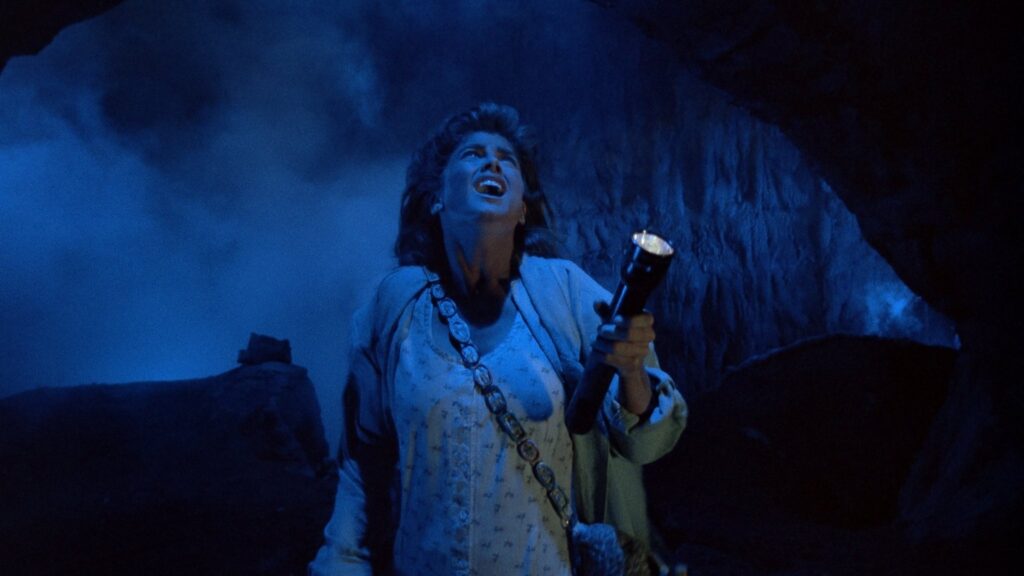
Alien From L.A. (1988), a family adventure picture produced by Canon Films, borrows liberally from Jules Verne and L. Frank Baum while always being most faithful to the vision of micro-budget movie. auteur Albert Pyun. Those familiar with Pyun’s oeuvre will no doubt recognize the lighting strategies from The Sword And The Sorcerer (1982) cave sequences; the textures and architecture that would later comprise the world of Nemesis (1992); or the stilted, child-like logic and wholesomeness that in two years would define Pyun’s Captain America (1990). Alien From L.A. is the major turning point aesthetically for Pyun as his style and the content of his movies began to catch the zeitgeist.
For the most part Pyun is content to invent the subterranean world of Atlantis for the character of Wanda (Kathy Ireland) to explore in search of her father (Richard Haines) as a means of composing compelling visuals. Despite a modest budget Alien From L.A. has some excellent special effects and a rather cohesive production design. Pyun exploits all of this to find compositions that border on the spectacular. As flimsy as the movie may be in terms of characterization and plot it is richly filmic. The ability to make trash look like art is a gift few filmmakers have, particularly in this vein of low budget movie making.
Albert Pyun may be the author of this film but it really belongs to Kathy Ireland. Alien From L.A. was Ireland’s first movie and she comes at her debut role with tremendous sincerity, a lot of inadvertent camp, and a voice lifted from Jayne Mansfield. It’s Ireland’s inherent charisma and photogenic features that propel any urgency that exists in the film. Ireland isn’t able to articulate the change her character undergoes (from nerd to supermodel) once she’s fallen through a hole into Atlantis, but she charms the viewer enough along the way that the audience is right there with her the entire time.
Since its release Alien From L.A. has garnered a cult following. People seek out this unique little mess of a film either as fans of Pyun or Ireland, as devotees to the pop culture of the eighties, or simply to delight in the picture’s “so bad, it’s good” qualities. All of the family oriented films I have seen by Canon Films function this way. Alien From L.A., like Over The Top (1987), feels like it has almost been made in a void where children’s pictures have never existed before. There’s something paradoxical about these hyper-eighties spectacles that feature moments of real craftsmanship and artistry yet still feel like a hodgepodge of different ideas from aborted New World Pictures projects.
